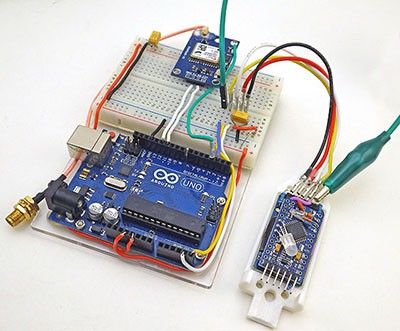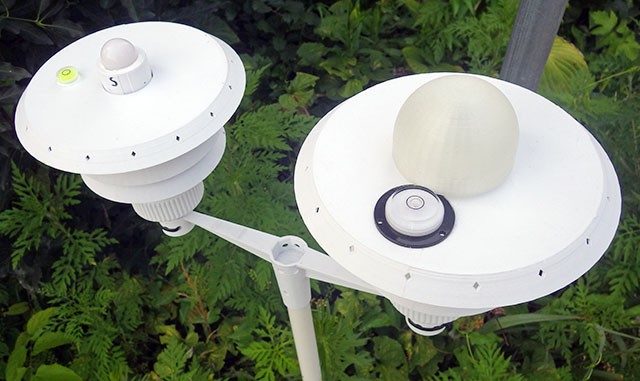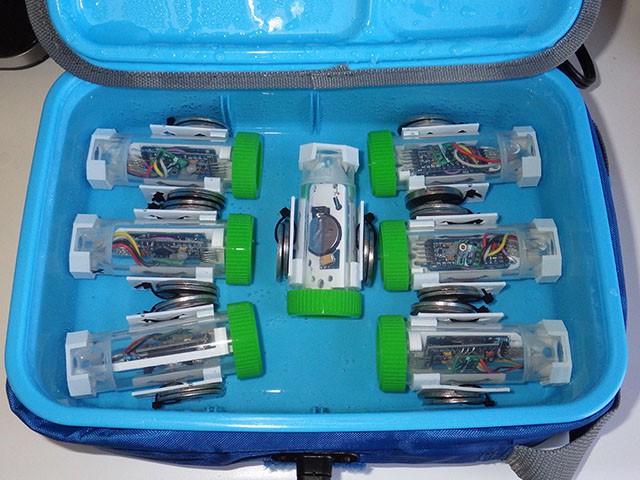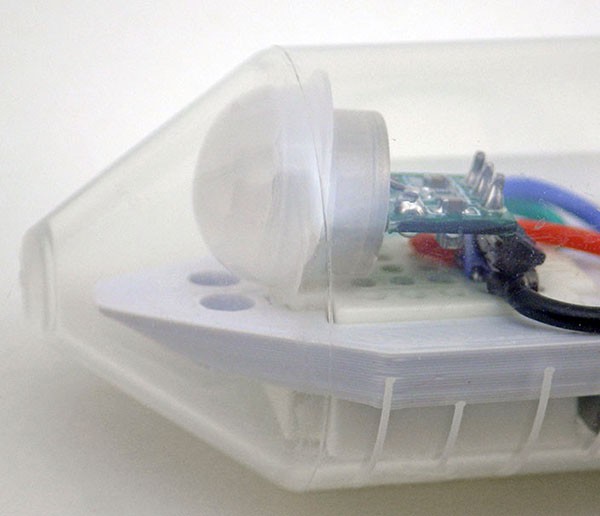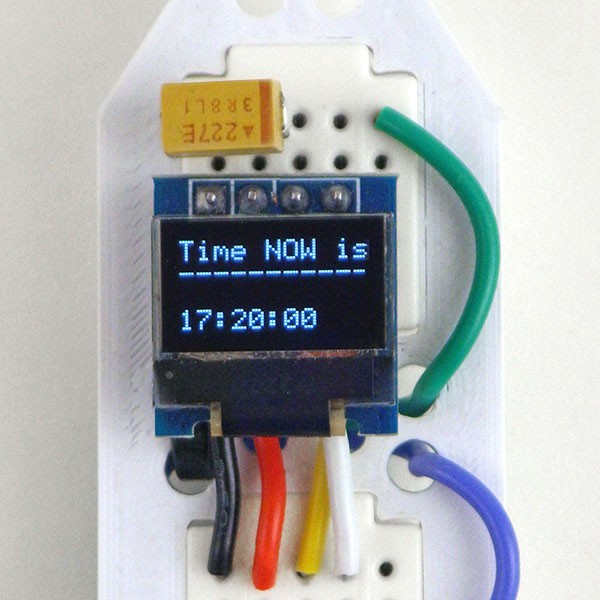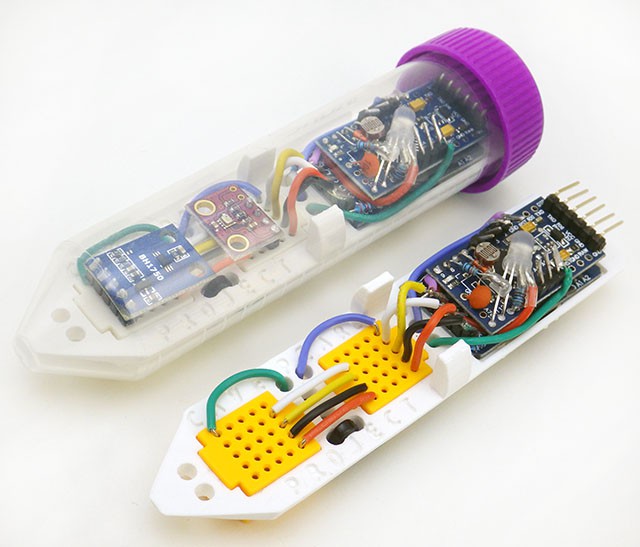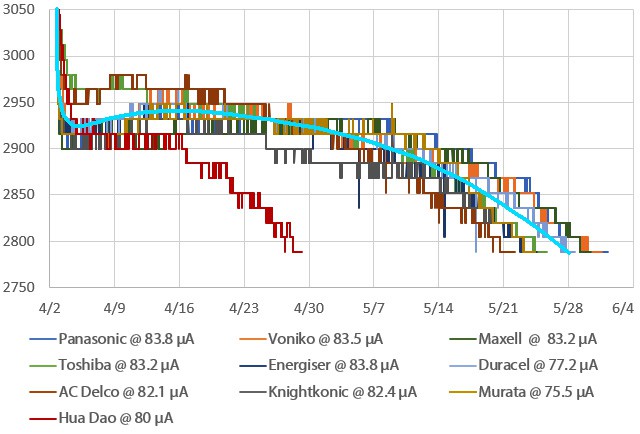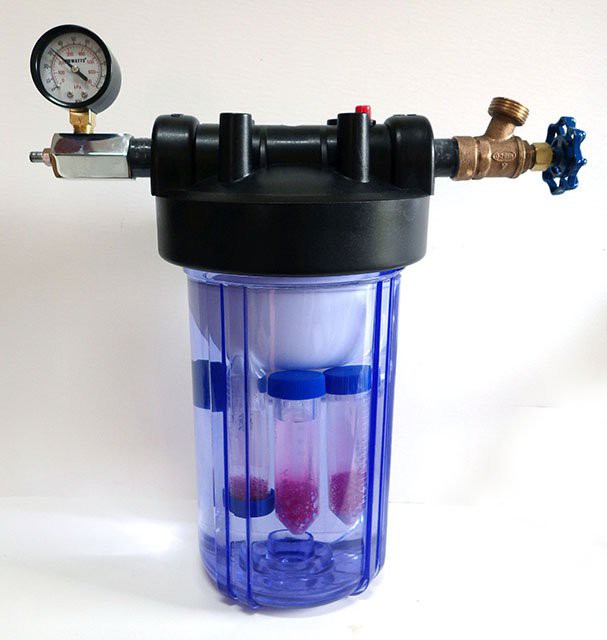-
Setting Accurate RTC time with a GPS & the DS3231 Aging Offset to Reduce Drift
10/23/2024 at 15:02 • 0 comments![]()
After 10 years using cheap DS3231 modules I finally got serious about synchronizing the logger clocks for group deployments. Primarily this is to improve data quality for things like tide signal analysis, but also to address the increasing number of DS3231-M chips we’ve been getting lately that aren’t up to snuff. In addition to synchronizing the time setting process to the leading edge of a GPS pulse, we also (taking a lead from HeyPete and others) tune the Aging register to reduce clock drift. The quid pro quo is that the reduced drift within the tuning temperature range increases non-linearity at more extreme temperatures. But underwater/cave research sites are quite thermally stable compared to outdoor climate stations, so it’s worth that tradeoff.
For all the gory details see the blog at:
https://thecavepearlproject.org/2024/10/22/setting-accurate-rtc-time-with-a-gps-the-ds3231-aging-offset-to-reduce-drift/ -
Calibrating a BH1750 Lux Sensor to Measure PAR
08/12/2024 at 15:23 • 0 comments![]()
With a complete logger solution that can be built for less than $10, I think it's safe to say that the financial barriers to the deployment of DIY monitoring systems have been overcome by the open source hardware movement. However the slow adoption of solutions like ours has highlighted that other barriers remain. For these innovations to have more impact in teaching & research developers must also transfer knowledge about testing, calibration, and implementation procedures. Our latest effort in that area is cross-calibrating an inexpensive Bh1750 lux sensor to measure photosynthetically active radiation. This was done with natural sunlight and one of the many online irradiance calculators so that the overall procedure is accessible to anyone no matter what level of resources they have access to. While using a lux sensor for this is not new and inexpensive PAR sensors are now entering in the market, hopefully our approach to the task conveys more of the background information that's actually required for this kind of calibration - especially in an educational context.
https://thecavepearlproject.org/2024/08/10/using-a-bh1750-lux-sensor-to-measure-par/ -
How to Normalize a Set of Pressure Sensors
05/06/2024 at 15:04 • 0 comments![]()
Another bread n butter post for enviro-sci, but we couldn’t release that post on calibrating sensors without covering the closely related process of sensor normalization. And the two are not exclusive: you can normalize after calibration to bring a set of sensors into better alignment than even your reference sensors. Unfortunately, a good reference for pressure is hard to find, or very expensive, so you are usually stuck using Airport climate stations which can be many miles away.
https://thecavepearlproject.org/2024/05/01/how-to-normalize-a-set-of-pressure-sensors/
-
A practical method for calibrating NTC thermistors
04/22/2024 at 00:58 • 0 comments![]()
Much of the existing information on sensor calibration assumes a certain level of pre-existing equipment/capability. This creates a chicken & egg problem with white-paper procedures targeting an accuracy that can not be obtained unless all the supporting parts of the system meet or exceed that same specification. This is almost never the case in educational contexts where STEM instructors often pay for classroom materials out of pocket. This mismatch parallels the situation twenty years ago when audiophiles dismissed the early MP3 players because they sounded so crude, completely missing the point that regular people were using them while jogging through downtown traffic. They were a good enough solution to a problem that didn’t need anything better.
From the beginning our project has been developing DIY logger solutions with that kind of 80/20 point in mind, and this thermistor calibration procedure hits that mark: https://thecavepearlproject.org/2024/04/20/a-practical-method-for-calibrating-ntc-thermistors/
To my knowledge this is the first time anyone has used the water freezing process to calibrate thermistors, rather than the melting point of an ice slurry.
-
IR transmission through the falcon tube housing
12/14/2023 at 18:30 • 0 commentsAnother hidden gem: the polypropylene those centrifuge tubes are made from transmit IR frequencies opening up several sensor possibilities. PIR detection through the housing reaches about 5m for people. The loggers can also be triggered by animal traffic, so pet behavior is a popular theme for final student projects.
https://thecavepearlproject.org/2023/12/01/the-e360-a-classroom-data-logger-for-science/![]()
-
0.49" micro OLED screens are remarkably low power
12/11/2023 at 17:06 • 0 commentsA hidden gem with our new e360 classroom loggers: the 0.49” micro OLEDs only draw about 3-400 µA and sleeps ~6µA! So you can have screen output like this for about same amount of power as an indicator LED and that means you can run them on a Cr2032! Since they use SSD1306 controller they can be made to work with standard libraries provided you compensate for mis-match between the origins on screen and the origin in the controllers 1K memory.
![]()
https://thecavepearlproject.org/2023/12/01/the-e360-a-classroom-data-logger-for-science/ -
The e360: A Classroom Data Logger for Science
12/01/2023 at 21:03 • 0 commentsWell it's been a long road, and several remote runs of the instrumentation course during COVID didn't help the process because they had to be done without soldering. But I think we've finally arrived at an educational version of the ProMini based logger that has the right mix of software and hardware adaptability to be a real contribution to other STEM educators . After a practice session soldering header pins to perf-board, students can build these and actually deploy them out in the real world. Two breadboards make it easy to align connections with the many different I2C sensor modules on the market provided they aren't too demanding for the little Cr2032 that powers the unit. Memory expansion is nearly effortless with 32k EEprom modules. At between 5-10uA sleep current with those cheap sensor modules attached, you should easily get at least 6 months of operation.
https://thecavepearlproject.org/2023/12/01/the-e360-a-classroom-data-logger-for-science/![]()
The software is now much more streamlined compared to what we released in 2022, and we moved the LED / sensor cluster around to accommodate the lab activity sequence:
-
Testing Cr2032 Batteries with our 2-Part Mini loggers
06/05/2023 at 19:55 • 0 commentsRan a series of Cr2032 battery tests with our 2-part falcon tube loggers and was pleasantly surprised to find that even with the default BOD limiting us to the upper plateau of those cells; we can still expect about two years of run time from most name-brand batteries. https://thecavepearlproject.org/2023/06/05/testing-cr2032-battery-discharge-time-with-our-2-part-promini-loggers/
![]()
With a series of resistors on the digital pins, this little logger might be the easiest way to simulate duty cycles for other more complex devices that you can’t afford to lose a dozen of for the duration of long term tests. Also note the curves are a bit chunky because the internal vref trick only has a resolution of 11mv, and we use index compression that reduces the record further to 16mv/step.
-
A DIY Pressure Chamber to Test Underwater Housings
05/25/2023 at 16:00 • 0 comments![]()
The max depth for conventional scuba diving 130 feet - 40 meters - as dives to those depths can usually avoid complicated decompression procedures. This also covers the vast majority of underwater research deployments, and our work is focused there with our little falcon tube loggers. In keeping with the projects 'hardware store' ethos, household water filters offer a good solution for pressure testing DIY builds for deployment in that zone without blowing the budget:
https://thecavepearlproject.org/2023/05/24/a-diy-pressure-chamber-to-test-housings/ -
2-Module Mini Logger Build Tutorial (w 64k EEprom upgrade)
04/25/2023 at 14:47 • 0 commentsThe latest in an ongoing series of build videos supporting Dr. Beddows enviro-sci students who all have to first build the logger(s) that get used for their final research project. These videos also support the other instructors who have adopted our DIY loggers for their own courses. These Falcon tube mini-loggers may well be as minimal as it is possible to go while still offering the flexibility of supporting multiple different sensors. About the only limitation is that the CR2032 levels out at 3.0v and runs all the way to 2.8v before shutdown - which rules out some older sensors like the DS18b20 which has a lower limit of 3.3v. After calibration, the NTC has so much more resolution that it’s not much of an issue.
And for those with more build experience we also posted a 4minute 'rapid review' of the steps:
The Cave Pearl Project
Creating a generic data logging platform that is easy to build & modify for many different environmental monitoring projects.
 Ed Mallon
Ed Mallon